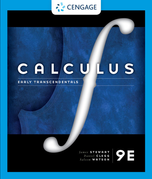?An electric dipole consists of two electric charges of equal magnitude and opposite
Chapter 11, Problem 33(choose chapter or problem)
An electric dipole consists of two electric charges of equal magnitude and opposite sign. If the charges are \(q\) and \(-q\) and are located at a distance d from each other, then the electric field \(E\) at the point \(P\) in the figure is
\(E=\frac{q}{D^{2}}-\frac{q}{(D+d)^{2}}\)
By expanding this expression for \(E\) as a series in powers of \(d / D\) show that \(E\) is approximately proportional to \(1 / D^{3}\) when \(P\) is far away from the dipole.
Equation Transcription:
Text Transcription:
q
-q
d
E
P
E=q/D^2-q/(D+d)^2
E
d/D
E
1/D^3
P
Unfortunately, we don't have that question answered yet. But you can get it answered in just 5 hours by Logging in or Becoming a subscriber.
Becoming a subscriber
Or look for another answer
